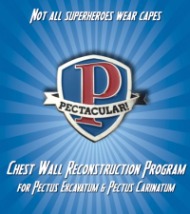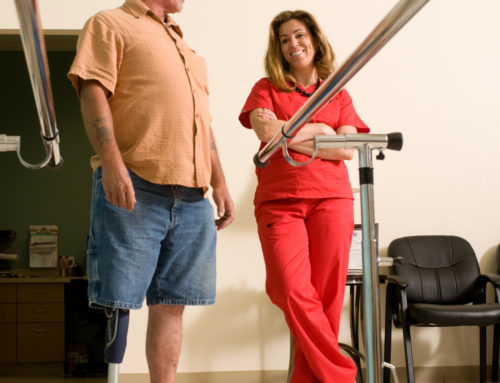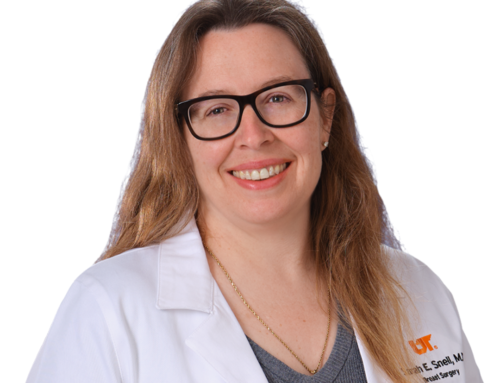Many individuals who have pectus excavatum or pectus carinatum surgery to correct chest wall deformities do so in adolescence before they’re fully grown. Yet, there’s a number of adults who did not pursue surgical correction who are now experiencing unexpected side effects in adulthood. This was the case for 25-year-old Brooke Britton, a registered nurse and aspiring travel blogger.
“I started to have pain and a stabbing sensation where the bones in my chest were pushing on my organs. The problem had been bothering aesthetically for some time and for how easily I would become fatigued. I was really uncomfortable, and I began to wonder if the pectus excavatum was structurally getting deeper as I was getting older,” says Brooke. “As a nurse, I knew that my pectus excavatum was causing my chest to push up against my heart and lungs. With the Covid pandemic, this condition would put me at high risk for complications if I did contract corona virus. This situation really pushed me to think more about surgery and addressing the problem once and for all.”
ADDRESSING A LIFE-LONG CONDITION
Brooke’s pectus excavatum was a structural defect from birth. Her parents didn’t notice it at first, and it didn’t become pronounced until around her first birthday. When diagnosed, the experts they talked with at the time said she had a mild case that wouldn’t affect her respiratory or cardiovascular system in adulthood. The family decided not to pursue surgical correction when she was younger, and Brooke didn’t experience any specific problems until her college years.
As Brooke got older, that slowly began to change when she started experiencing other symptoms related to her physical fitness – her heart rate would go through the roof when she exercised, and she got out of breath much more quickly than family and friends doing the same activities. She decided to learn more about the surgery to correct the problem and connected with Dr. Lisa Smith, founder of the Pectacular! Chest Wall Reconstruction Program at University Surgical Associates and Erlanger.
“Dr. Smith really has the whole process of education, preparation, surgery and recovery down to a science. She has her own dedicated team including anesthesiologists and nurse anesthetists, ICU rooms, and a medication regimen fine-tuned to effectively manage post-operative pain,” says Brooke. “Pectacular! was a unique program – unlike anything that I’ve been exposed to while being a nurse. I closely followed her instructions, and it works.”
PREPARATION AND SUPPORT ARE KEY
Following the plan, Brooke participated in pre-habilitation for two months prior to surgery. Working with specialized physical therapists, she focused on strengthening muscles specifically needed during recovery, including her chest, shoulders and upper back. This would also come in handy after surgery because it also significantly impacts a person’s posture and center of gravity.
After pre-hab and pre-testing that provided information about the depth of the deformity (called the Haller index) and checked to see how effectively her heart was functioning, Brooke was ready for surgery. She’s quick to share that she doesn’t remember much about the procedure or the days immediately following. She does know that the medication plan ensured she could manage the pain and enabled her to get up and move – spurring on her recovery.
“I was completely dependent on my family for the first month after surgery – I couldn’t move myself from a lying to a sitting position on my own without potentially disturbing the bars set inside. You also have to learn to maneuver your body because you can’t twist or bend your torso at all,” Brooke shares. “My husband, Brad, and my whole family were an amazing support system who came together to take great care of me. There’s no way you can go through this process without help and support.”
Full recovery from pectus excavatum surgery typically takes about six months, meaning you have no physical restrictions. Many people are up and moving more normally at three months, and you can begin doing things like carrying a backpack, non-contact sports and gradually increase weight lifting.
Brooke returned to work at about four months, taking a position that was less physically demanding. Even though the procedure was painful and required a lengthy recovery, Brooke believes it was the right decision – and worth the disruption and discomfort to live a more active and pain-free life.
“If you’re experiencing pain or feel like there’s a structural issue that’s affecting your ability to live and work or do things you enjoy, I would encourage you to do it now. I have more stamina when I exercise, and I can breathe more deeply than I ever have before,” says Brook. “Dr. Smith has mastered this procedure and knows what she’s doing to help get you through it. It was probably one of the hardest things I’ve done, but knowing what I know now, I would choose this path again.”
Learn More about Pectacular!
The Chest Wall Reconstruction Program offered by University Surgical Associates and Children’s Hospital at Erlanger is a multidisciplinary program designed to address the needs of individuals who were born with pectus excavatum and pectus carinatum. Because the decision to seek treatment is complex and often involves the whole family, the program was developed to address those very specific needs, provide support, and connect you with others who have walked the road you are considering.
To schedule a consultation with Dr. Lisa Smith, call 423.267.0466.












thank you for the information
Many who undergo pectus excavatum or pectus carinatum surgery do so in adolescence. Yet, adults like 25-year-old Brooke Britton, a nurse and travel blogger, face challenges too. Brooke experienced chest pain and fatigue, which worsened over time. Her pectus excavatum surgery, guided by Dr. Lisa Smith, significantly improved her quality of life. This highlights the importance of addressing chest wall deformities, regardless of age.